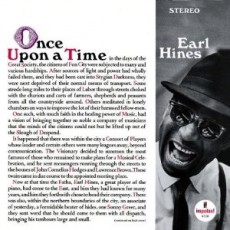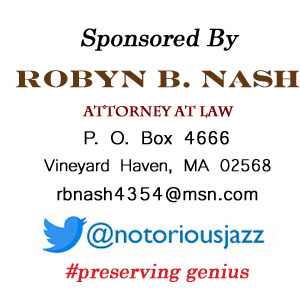
Daily Dose Of Jazz…
Earl “Fatha” Hines was born Earl Kenneth Hines on December 28, 1903 in Duquesne, Pennsylvania. The youngster took classical piano lessons and by eleven was playing organ in his local Baptist church. Having a “good ear and a good memory” he could re-play songs and numbers he heard in theaters and park concerts. At 17, with his father’s approval, Hines moved away from home to take a job playing piano in a Pittsburgh nightclub with baritone Lois Deppe & his Symphonian Serenaders. He would accompany Deppe on his concert trips to New York and record his first four sides for Gennett Records in 1923 that included Hines’ composition Congaine.
In 1925 Hines moved to Chicago, Illinois, then the world’s “jazz” capital, home to Jelly Roll Morton and King Oliver. He started in The Elite no. 2 Club but soon joined Carroll Dickerson’s band, touring with him on the Pantages Theatre Circuit to Los Angeles. He met Louis Armstrong in the poolroom at Chicago’s Musicians’ Union and becoming good friends played together Louis was astounded by Hines’s avant-garde “trumpet-style” piano playing. They played together in Dickerson’s band, Louis’ Hot Five and The Unholy Three.
Hines joined clarinetist Jimmy Noone, recorded his first piano solos for QRS Records in 1928, then for Okeh in Chicago. In Chicago he lead his own big band at the Capone controlled Grand Terrace Café, working continuously through the Great Depression. He influenced or taught Nat “King” Cole, Jay McShann and Art Tatum. Fatha brought along in his band Dizzy Gillespie, Budd Johnson, Ray Nance, Trummy Young, Harry “Pee Wee” Jackson, Charlie Parker, Scoops Carry, Teddy Wilson, Omer Simeon and Nat “King” Cole, along with vocalists Sarah Vaughan and Billy Eckstine among others.
He laid the seeds for bebop bringing modern players like Gene Ammons, Benny Carter Wardell Gray, Bennie Green and shadow Wilson to name a few. Earl would hire and all-women group during WWII, fronted Duke Ellington’s band when he was ill, and had a serious head injury from a car crash that affected his eyesight for the rest of his life.
Earl “Fatha” Hines was one of the most influential figures in the development of modern jazz piano and according to one major source, is “one of a small number of pianists whose playing shaped the history of jazz”. To name a few would be an injustice to those unmentioned as his list of recordings with jazz notables runs endlessly.
Over the course of his career Earl joined up again with Armstrong in what became the hugely successful “Louis Armstrong and his All-Stars small-band”, he won Downbeat Magazine’s Hall of Fame “International Critics Poll” and elected him the world’s “No. 1 Jazz Pianist”, made a hour long documentary at Blues Alley in Washington, DC, played solo at the White House and for The Pope, and played and sang his last show in San Francisco a few days before he died in Oakland, California on August 22.1983. On his tombstone is the inscription: “Piano Man”.
More Posts: piano


